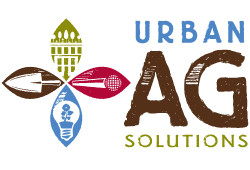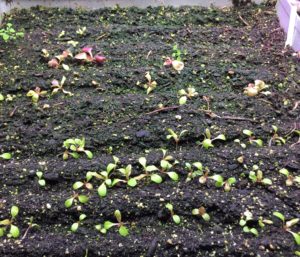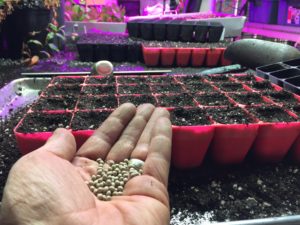Can you tell whether the foreground or the background had fresh lettuce seed? If you can then you probably don’t need to read this post.
It’s an understandable reflex, the thrifty reach for last year’s seeds instead of starting off with the new package you just ordered or bought, but ask yourself the following non-gardening question.
Would Usaine Bolt, the world’s top sprinter, in the peak of his form, accept a dingy, spongy old set of starting blocks? It’s a rhetorical question, of course, because the answer is: No, he wouldn’t! Similarly you and I, though perhaps not yet, but clearly striving to be, the world’s best gardeners, should position ourselves for a fast start off the blocks, and the way to do that is new, fresh seed.
You will undoubtedly protest that seed, by its very nature, has a certain durability to it. It has to, lest the Earth itself go bare. And perhaps you’ve heard of thousand-year-old seeds sprouting when exhumed from Egyptian graves. (A supposed myth…see here for actually oldest seeds: https://en.wikipedia.org/wiki/Oldest_viable_seed) Plus even this blog advocates seed saving for later planting (http://www.urban-ag-solutions.com/seedy-business/), so what gives?
Well, a seed’s ability to endure and retain viability varies with the kind of seed it is and with the conditions under which it is stored. Here’s a reference chart indicating that many garden variety seeds have only a 1-2 year shelf-life under ideal conditions: https://www.fedcoseeds.com/seeds/seed_saving.htm. The key word here is “ideal”.
Since seeds germinate in the presence of moisture and heat, it makes sense that keeping them away from both would keep them dormant and vibrant. In my next post I’ll feature the best way to store and to use stored seeds, but for now let’s assume that you’re like me. In the thrill of a spring day, I will often bring seed packages outdoors for planting. I will sometime set them down on the ground. Sometimes a passing shower will moisten them. Sometimes I will forget them outside for a day or two. I get distracted like everyone else, and even though I know how to keep seeds fresh, I don’t always do it. So that pristine packet of seeds, with lots of potentially save-able seed left over, comes indoors slightly moist, slightly damp, and thus slightly compromised. Even if now I follow proper storage practices to the “T”, I can probably expect lower seed viability in the year or years to come.
Consider a packet of lettuce seeds. For the price of one, organic head at your grocers, you get 500 seeds. It’s small potatoes, so to speak, to get a new, fresh packet each year, virtually guaranteeing start-up success. If I’ve got extra seed from last year, and I don’t just want to get rid of it (See, I don’t reject that initial thrifty impulse altogether.), I wait and broadcast it outdoors when the weather warms and just accept the germination, compromised or not, that comes from those seeds, considering them a kind of bonus, edible carpet with which I can cover a bare spot in the garden and get a yield.
Here’s some nice, fresh lettuce seed, and this pelleted to facilitate hand seeding and minimize thinning later on. New seed virtually guarantees a fast start to the season!
Don’t waste your precious indoor seed-starting space. Don’t stare for a month at a barren seed tray wondering whether those seeds you planted are going to sprout or not. Spend a buck or two, get fresh seed, and start the season strong.


